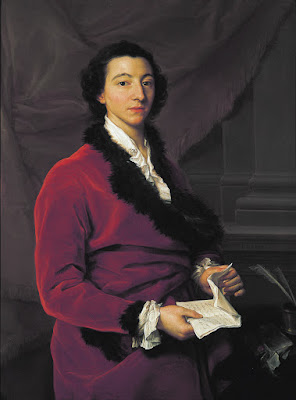ALEXANDER STEWART (1746-1831), second son of Alexander Stewart MP, of Mount Stewart, County Down, and younger brother of Robert, 1st Marquess of Londonderry, purchased the estate of Ards from the Wray family, and settled there in 1782.
Mr Stewart, High Sheriff of County Donegal, 1791, espoused, in 1791, the Lady Mary Moore, younger daughter of Charles, 1st Marquess of Drogheda, by the Lady Anne Seymour his wife, daughter of Francis, 1st Marquess of Hertford, and had issue (with other children, who died young),
ALEXANDER ROBERT, his heir;Mr Stewart was succeeded by his eldest son,
Charles Moore (Rev);
John Vandeleur, of Rock Hill;
Maria Frances; Gertrude Elizabeth.
ALEXANDER ROBERT STEWART JP DL (1795-1850), of Ards and Lawrencetown House, High Sheriff of County Donegal, 1830, who wedded, in 1825, the Lady Caroline Anne Pratt, third daughter of John, 1st Marquess Camden, and had issue,
ALEXANDER JOHN ROBERT STEWART JP DL (1827-1904), of Ards and Lawrencetown House, High Sheriff of County Donegal, 1853, County Down, 1861, who married, in 1851, the Lady Isabella Rebecca Graham-Toler, seventh daughter of Hector, 2nd Earl of Norbury, and had issue,
ALEXANDER GEORGE JOHN, his heir;Mr Stewart's eldest son,
Charles Hector;
George Lawrence;
Henry Moore;
Cecil George Graham;
Caroline Helen Mary; Beatrice Charlotte Elizabeth; Ida Augusta Isabella.
ALEXANDER GEORGE JOHN STEWART (1852-97), a Barrister, wedded, in 1883, Julia Blanche, daughter of Charles Dingwall, of Knollys Croft, Surrey, and had issue, two daughters,
ENA DINGWALL TASCA;The elder daughter,
Muriel Neara.
ENA DINGWALL TASCA, LADY STEWART-BAM, of Ards, wedded, in 1910, Sir Pieter Canzius van Blommestein Stewart-Bam JP, of Sea Point, Capetown (son the Johannes Andrew Bam), who assumed with his wife the prefix surname and arms of STEWART on his marriage.
ARDS HOUSE, Creeslough, County donegal, was formerly the seat of the Wray family.
In the 18th century, the last William Wray of Ards was "a celebrated figure, eccentric and autocratic, though kind and generous".
This gentleman resided at Ards in feudal state, constructing roads through mountains at his own expense; lavish in his hospitality to guests.
As a consequence of this extravagance, the Ards estate itself was purchased by Alexander Stewart Junior in 1782 (for £13,250 - probably money left to him by his father).
However, the Stewart family had a long association with the Londonderry/east Donegal area, and originally hailed from Ballylawn, County Donegal.
In the 19th century, following the falling-in of the Mercers' lease, probably in 1830, the Stewarts of Ards concentrated on Donegal, acquiring property at Doe Castle and Letterkenny, both in that county.
The Stewart, later Stewart-Bam, family, owned land mainly at Ards, Doe Castle, Dunfanaghy and Letterkenny, in County Donegal.
Ards House was rebuilt about 1830 by Mr Stewart, towards the end of his life.
The main front is of two storeys; good plasterwork in the hall; friezes in the drawing-room and dining-room.
The estate was sold in 1925.
It was acquired by the Franciscans in 1937, who demolished it about 1965.
Ards Forest Park used to form part of the Stewart estates.
The last member of the Stewart family to own the estate was Ena, Lady Stewart-Bam, who inherited from her grandfather about 1904.
*****
Other former seat ~ Lawrencetown House, Gilford, County Down. Town residence ~ 5 Old Court Mansions, Kensington, London.
First published in May, 2012.











































